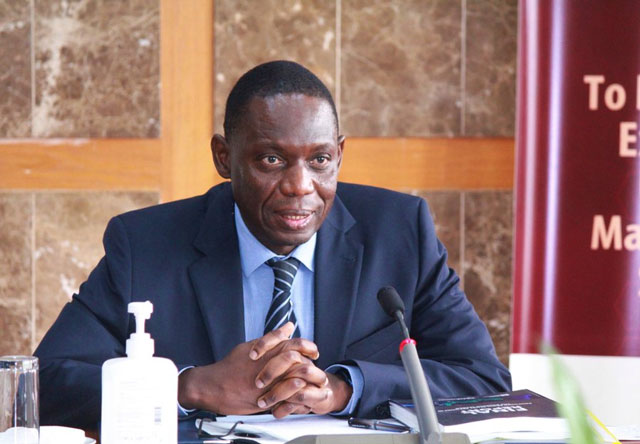
Kampala, Uganda | THE INDEPENDENT | The Deputy Governor of the Bank of Uganda, Michael Atingi-Ego has told parliament that the country’s public debt has now hit 80 trillion Shillings.
He says that Uganda’s debt servicing in the current financial year 2022/2023, is at a ratio of tax revenue estimated at 30 percent and this suggests that any further borrowing with associated servicing in the short to medium term would constrain government development efforts.
Atingi-Ego says that the 80 trillion Shillings public debt is as of September 2022, which is approximately 50 percent of GDP. This is an increment of 10 percent from September 2021.
The Deputy Governor was appearing before Parliament’s Committee on Finance, where he presented a statement on the state of Uganda’s economy with reference to the inflation developments, debt sustainability and the macro-economic outlook.
“Failure to resist expenditure pressures amidst rising debt servicing costs and failure to revamp growth remains the most significant risks to debt distress. Outlook to debt sustainability is dependent on the government’s commitment to the fiscal consolidation path and the evolution of global, domestic financial conditions and the growth of the economy,” reads part of Atingi-Ego statement to the committee.
Atingi-Ego also told MPs that other indicators that need to be looked at are the debt servicing to exports. He said that any external loan being acquired should be interrogated to ascertain how it is going to conserve and generate foreign currency in order to help the country’s debt servicing.
In his written statement to the committee, the Deputy Governor noted that the rising foreign debt servicing and government imports of goods and services, have significantly pushed down the international reserves to US Dollars 3.65 billion as of end of October 2022, from US Dollars 4.54 billion at the end of April 2022. He said that this is amidst low inflows of foreign currency that has inhibited the purchase of Dollars from the domestic market.
“In financial year 2022/2023, the government imports plus foreign debt servicing will require about US Dollars 1.8 billion which will further reduce international reserves. The rise in foreign debt servicing is largely due to maturity of non-concessional loans. In addition, the debt service/export ratio is also projected to increase beyond the 20 percent threshold between financial years 2021/2022 to 2025/2026,” further reads Atingi-Ego’s statement.
MPs learnt that the declining international reserves might constrain Bank of Uganda from intervening in the foreign exchange market in an event of another exchange rate depreciation spike. The Deputy Governor said that with the external shocks reverberating within the economy, Uganda requires substantial amounts of international reserves to be able to withstand the ripple effects of global instabilities.
Atingi-Ego said that the Bank of Uganda advice to the Ministry of Finance has been to suspend non-concessional external borrowing that has debt servicing obligations that would commence in less than 5 years.
He said that for Bank of Uganda, they have minimized the intervention in the foreign exchange market and that they last intervened in the first week of June.
“We have allowed the exchange rate to reflect the market fundamentals and unless necessary, we want to allow the market conditions and our policies to try to stabilize the currency.
So now, in order to conserve our hard earned reserves, we need to make sure that the moneys we are contracting for these loans are generating foreign currency resources to help us with debt service,” Atingi-Ego said.
Adam Mugume, the Director of Research and Policy at the Central Bank says that out of the 80 trillion Shillings public debt, foreign debt accounts for 47 trillion Shillings (US Dollars 12.6 billion) while domestic debt is at 33 trillion Shillings.
He said that the numbers keep changing due to debt servicing and changes in monthly interest rates. Mugume emphasized that the debt remains sustainable.
The Central Bank says that almost all domestic debt risk indicators were within the 2018 Public Debt Management Framework (PDMF) thresholds and the domestic debt Average Time to Maturity (ATM) was above target at 6.7 years in September 2022, up from 4.5 in September 2020.
The Deputy Governor says that this is consistent with government’s strategy to lengthen the maturity structure of the domestic debt portfolio to avert refinancing risks.
****
URN
 The Independent Uganda: You get the Truth we Pay the Price
The Independent Uganda: You get the Truth we Pay the Price


